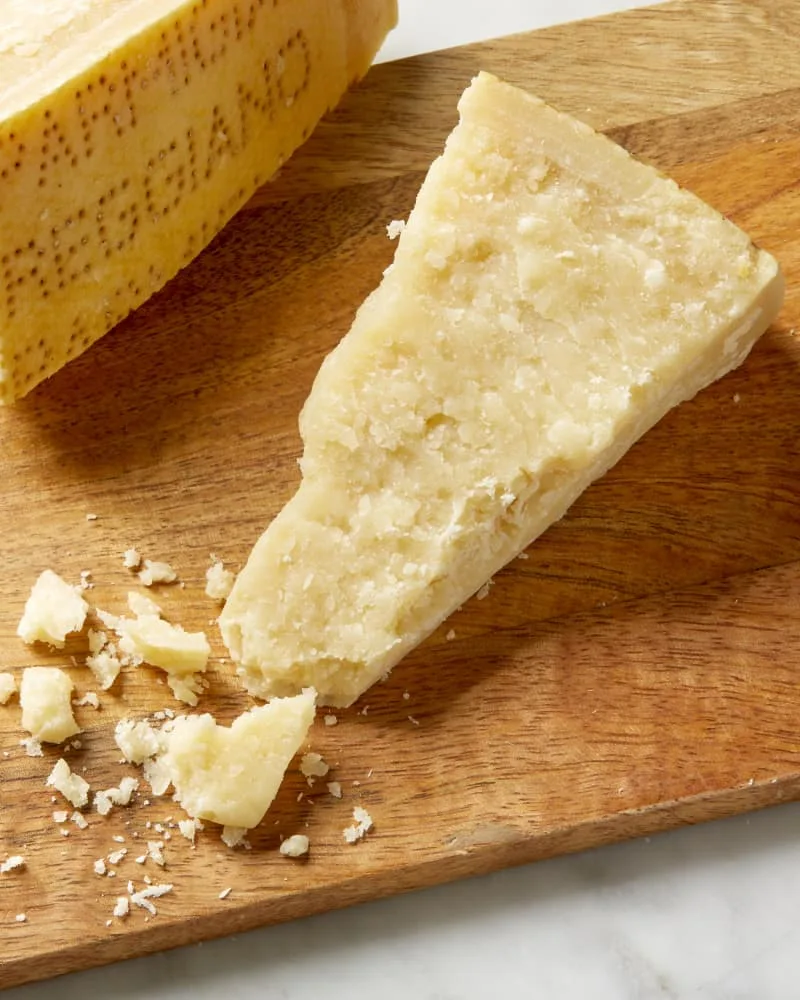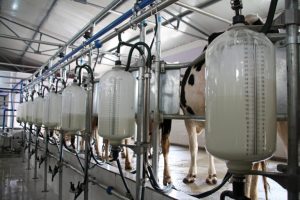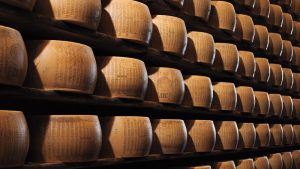
When I used to be a cheesemonger (at a store that specifically only sold American-made cheeses), one of the things that confused customers the most was that we didn’t sell Parmesan cheese. Not a single wedge! This was simply because American Parmigiano Reggiano does not technically exist.
Yes, you can pick up a hunk of something labeled “Parmesan” or a grated container of Parm at any odd grocery store, but you’re often not getting the full experience of genuine Italian-made Parmigiano Reggiano. So it was never on our shelves (sorry!)
If you’ve ever spotted a product or cheese that’s labeled as “real Parmesan,” I’m going to ask you to kindly step away from it like you’re a cartoon rabbit who has just spotted dynamite. Why is that? Well, much like how the phrase “jumbo shrimp” is a misnomer, “real Parmesan” doesn’t quite quantify much of anything being, well, real. Confused? Well, let me break it down.
In short: Parmigiano Reggiano is basically the cheese equivalent of Champagne. According to a particular consortium that specifies the hows and whys of the making of protected products (other notable protected cheeses of the world include Gruyère, Comté, and Stilton), you can only name these products if they were produced in that area, under strict regulations, and inspected by the governing organizations overseeing those protected regions. Anything else is just “sparkling cheese,” so to speak.
What Is Parmigiano Reggiano and Where Does It Come From?
Parmigiano Reggiano is a cheese that really tells the story of a whole Italian region, as the resulting flavor of this ancestral cheese (and delicious crunchy, salty tyrosine crystals) is a direct product of the environment that surrounds it. In this case, it’s the Italian provinces of Parma, Reggio Emilia, Modena, and Bologna (that are to the left of the river Reno), and Mantua (which lies to the right of the river Po).
The production, processing, and maturation all take place in this area, and you can truly taste it, as the very specific grass and hay that is fed to the cows can only be grown along these two rivers. The specificity of this grass and hay not only adds flavor, but also changes the complex protein structure of the milk and resulting cheese. Think of it as cheese’s own version of terroir (where the area directly affects the taste of a bottle of wine).
Parmigiano Reggiano is also only made with raw milk, with no additives, and matured at least for 12 months (but often longer). Take a bite of a creamy-salty craggy nugget of Parmigiano Reggiano and I’m pretty sure you can taste that this is a cheese clearly made from the milk of happy cows.
What Is the Difference Between Parmigiano Reggiano and Parmesan?
As I said, Parmigiano Reggiano can only be made in a very specific region of Italy, so “Parmesan” is simply any cheese made literally anywhere outside the region that tries to mimic the Parmigiano Reggiano style of cheese. In fact, Parmigiano Reggiano is technically the most counterfeited product in the world, and the Consortium has even begun using microchips and QR codes on wheels of Parmigiano Reggiano to deter counterfeiters.
The taste of both Parmigiano Reggiano and Parmesan are, as you might expect, pretty different. Because the environmental conditions of Parmigiano Reggiano’s production are so specific and protected, you’re really tasting the literal cream of the crop. Of course, there are some American Parmesan-style cheeses that are plenty delicious (Sartori makes a particular favorite of mine) and easy to find, but seeking out Parmigiano Reggiano is well worth its weight in gold.
So how do you know if you have the real deal? You’ll know you have genuine Parmigiano Reggiano with a few tell-tale signs. First, the rind itself (or the label on your wedge) will be marked with a “DOP” symbol or marking (which stands for denominazione d’origine protetta, aka the protected designation of origin). DOP is a labeling marker of origin from the Italian consortium that is used to preserve the standards of regional food products, and is found on other items like mortadella, Parma ham, and balsamic vinegar.
What Does Parmigiano Reggiano Taste Like?
Depending on how long your particular piece of Parmigiano Reggiano is aged (which can range from 12 months to up to 72 months), Parmigiano Reggiano is notable due to its creamy, nutty, salty flavor and crispy-crunchy crystals (formed by tyrosine protein crystals). Ultra-savory and robust, Parmigiano Reggiano is full of natural umami flavor that often mellows into a subtly caramel sweetness, making it great for sweet and savory uses (like grating on to pasta, making gelato, or serving as part of a dessert cheese course).
Tasting a range of ages in Parmigiano Reggiano cheese will also show you how wide the spectrum truly can get, with most supermarkets offering 12- to 36-month varieties. Fun fact: If you happen to bite into, say, a 24-month (and up) aged hunk of Parmigiano Reggiano, you just might find that it can also make your tongue tingle.
How Is Parmigiano Reggiano Used?
Parmigiano Reggiano improves most everything it touches, so the opportunities for using it in the kitchen are nearly endless. Grating it on pasta, pizza, or soup is classic, but no need to stop just there. Parmigiano Reggiano is also cheese that’s great for snacking on its own (especially with a drizzle of balsamic vinegar), using as part of a cheese board or dessert cheese course, or grating on to an espresso martini (don’t knock it until you try it).
The rinds are also worth holding on to as well. Most people mistakenly think that the rind is inedible (or that it’s made of wax, ), but it’s simply just a dry outer layer of cheese that can be used to season soups and risottos, or microwaved into a popcorn-y snack.
Before use, just make sure your Parmigiano Reggiano is left out at least an hour at room temp. This allows the cheese proteins to relax so that the full flavors really come out to play. You’ll do your future self a big favor by planning ahead — promise.





















